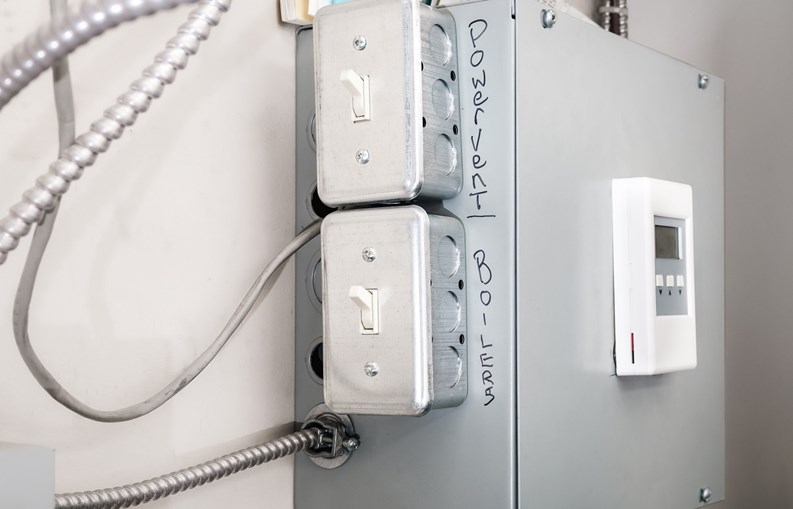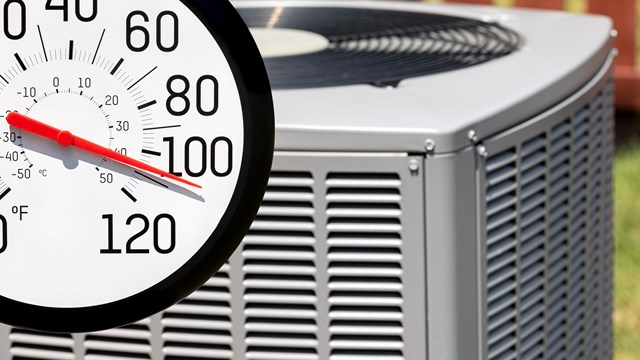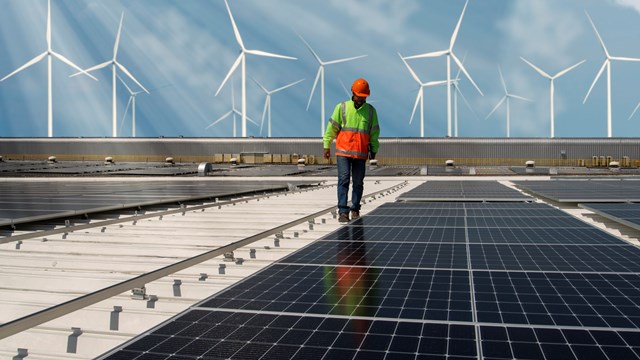Everyone wants to be comfortable in their home, but as every resident knows, that comfort comes at a price. Boards and managers know this too; with rising energy costs, climate change-related weather fluctuations, and looming fines on the horizon in many municipalities for failing to comply with new, more strict energy regulations, making sure your building’s boiler is running efficiently requires careful calibration.
Know Your Boiler
One key factor in assessing and optimizing your heating system before the mercury starts to drop is the age of your building, and of the equipment itself. It’s just a fact that older buildings consume more energy; pre-war buildings will often require 30,000-40,000 BTUs of heat per 1,000 square feet, whereas a newer building may only need 4,000-5,000 BTUs; that’s a huge differential.
But regardless of your building’s vintage, the first step to ensuring that its heating apparatus is working at peak performance is having a baseline understanding of that apparatus itself. According to Samuel Danis of Empire Management in Westboro, Massachusetts, “The best times to perform full maintenance on a boiler are in the spring and fall, so having the system shut down and cleaned right before the winter is extremely important. Next would be making sure all heat is working not only in the common areas but also inside specific units to prevent any freeze-ups. Most boilers actually have a winter and summer mode to save on unnecessary fuel in the summer. Making sure recirculation pumps are turned on and running in winter mode is huge to ensure heat is running. ”
Larry Kurtz, president and CEO of national energy management and consulting firm Accurate Energy Group notes that many older buildings have successfully transitioned from heavy, polluting heating fuels to cleaner ones like #2 oil and gas, but the current moratorium on installing new gas boilers in some markets poses a significant problem for older buildings. According to Kurtz, “Upgrading to an electric boiler requires additional electric service, which is expensive, and which many buildings simply aren’t set up for.”
“There are more options available in newer construction, built in the last 15-20 years,” adds Gus Sfakianos, Vice President of Mechanical Services at New York-based energy provider Energo Energy.” Newer buildings can be heated electrically, but older buildings can’t. It’s such a big difference in the heat load, and it isn’t easy to sustain. A boiler can only be 81% efficient—it’s just physics. No matter what you do with the boiler, energy consumption is high.”
Extreme Heat = A Strain on the System
Current weather patterns present another challenge to heating older buildings as extreme peaks in temperatures require aging boilers to work even harder, straining an already-taxed system.
“Your boiler is generating the same output in a few weeks that it should put out over a few months, so you’re really pushing the limits of the equipment. When you operate like that, there is another level of inefficiency in how you distribute heat and consume fuel,” Sfakianos says. “When you peak out, the price of energy becomes more expensive. Things can break, so you’ll also have higher maintenance costs.”
“When it’s very cold out,” he continues, “the boiler should work about four hours a day. During extreme weather, the boiler has to run longer, say, 10 hours. That’s a problem. The ‘shoulder’ seasons—early fall and late spring—are extended now, so the boiler is working less during the shoulder months and working harder during the peak seasons. We can adapt to that, but the challenge is trying to maintain a comfortable environment for a responsible amount of fuel.”
Josh Koppel, president of New York based property management firm HSC Management Corp. advises property managers and shareholders to work together to not overrun boiler systems during the winter. “We like to send out notices for winter protocols, a checklist, and a small digital thermometer to register air temperature—not the red dot gun that measures surface temperature. You need the air temperature to measure correctly.”
Don’t Let Savings Go Out the Window
The majority of lost or wasted energy escapes right out the window, because those windows aren’t being operated or monitored properly. Energy management systems, including functional window sensors, as well as being proactive in investigating drafty, leaking, or otherwise compromised windows can go a very long way toward reducing energy loss.
According to Koppel, “We tell people to check the tops of their windows to make sure they’re properly closed, because we see that so often,” says Koppels. “Window units lose a ton of heat, especially if they aren’t covered properly.”
Sfakianos agrees, adding that eliminating drafts coming in and around windows and checking for any leaks helps stop heating issues in their tracks. He also notes that window unit air conditioners become an issue because of gaps and damage to the surrounding window frames, and encourages residents to get covers for their AC units, and to make sure everything is sealed properly around them.
Insulation… or a Lack Thereof
Insulating residential buildings sounds like a simple solution, but it can be a logistical nightmare. “To improve insulation, you have to get into the walls,” says Sfakianos. “It can be tough to do, but it makes a huge difference.”
Compounding the issue of insulation is that it’s almost non-existent in older buildings, and adding more requires getting into the building envelope itself. “It was believed fresh air was helpful, so they would overheat buildings, and people would use their windows,” says Kurtz. This belief rendered insulation unhelpful when these buildings were being constructed.
Fix Lingering Leaks
Water, steam, oil, and exhaust are all problems when there are leaks. A simple water leak can do a lot of damage to the heating system, especially in buildings with steam heat: fresh water has a lot of contaminants that enhance corrosion and rust.
“It destroys everything,” Sfakianos says, “If you lose five or six thousand gallons of water a day–over time it adds up to a lot of water–we’ve seen buildings that leak that in a day. It’s a big problem.” He suggests quick repair or replacement whenever leaks are found and encourages unit owners to speak up: “If you can hear an air vent whistling, it means you have a leak. People get used to the noise, so they begin to think it’s normal, but it’s not.”
Inspect to Protect Your Heat
Danis says, “Keeping an annual schedule is extremely important. Small items like checking outside spigots can be forgotten easily, so having a spring and fall checklist is the most efficient way to ensure all is complete. Small items like changing filters, ensuring thermostats are operational can easily be forgotten, especially with all of the holidays during the fall and winter months.”
New York City property managers are very familiar with the inspection process, thanks to the Department of Buildings (DOB)’s annual inspection process. Between those yearly checks, industry pros say building managers and residents would also be wise to do their own.
“Before the winter season, we go through and make sure everything is cleaned and overhauled,” says Koppel. “Some may need to be cleaned multiple times. With the new biofuel, we’ve noticed the system gets dirtier quicker, some of them soot up quicker. If you see a section that leaks, it could be a gasket, and you have to replace that.”
Getting into individual units and identifying problems is also a key part of the larger process, notes Sfakianos. “We commonly get complaints that one side of a building gets too much heat, and the other side doesn’t get enough. That’s a steam and balance problem, and it’s difficult to solve unless you can get into the units. Residents need to be involved, keeping radiators clean and clear, and to ‘raise a flag’ if they notice a leak. It’s like having an open window in the middle of winter.”
Koppel agrees that having residents involved is the best way to stay on top of any issues. He says that “Residents need to do their part inside their unit, like making sure radiators are clear and windows are closed. Energy loss affects residents’ bills, because if we have to turn up the heat in the whole building to make one or two units warmer, it’ll burn through more fuel building-wide and affect their operating charges.”
To Repair or Replace
Out with the old, in with the new doesn’t always work when you’re talking about million-dollar upgrades. In some cases, repairing an old boiler will extend its life enough to keep a building code-compliant without breaking the bank. “You have to maintain the equipment,” says Koppel, “making sure the air valves and burners are properly running and vents are tweaked for peak performance. Replace what needs replacing, and you could run a boiler another 20 years.”
He shares an anecdote of repairing two original boilers at one of his properties: “We have two big box boilers from 1964 in one of our buildings, and we came up with a plan with an unbelievable boiler welding repair professional we had at the time. We repinned the entire shell of the boilers, and they ran beautifully. We have sensors installed, and they provide great heat.”
If a boiler is beyond repair, the replacement boiler is only a small piece of the heating puzzle. “You have piping, radiators, and steam vents to consider,” says Sfakianos, “In older buildings with older pipes, you have things that need to be maintained and repaired.”
Balancing Costs with Compliance
Sfakianos shares that local laws, such as Local Law 97 (LL97), are forcing building owners to make significant improvements to the design of their buildings. “Some compliance measures are very expensive and intrusive,” he notes. “Unless you start going in and doing gut renovations, like adding insulation and changing windows, you only address a small piece of the problem. If you’re living in an apartment, it’s not easy to knock down a wall and add insulation there—but you either make the improvements or pay the carbon emissions tax.”
State incentives require careful navigation and can vary, depending on the type of building and whether the type of boiler system installed is gas or oil. “There are subsidies available for oil and gas, and grants available through the state where they have certified companies come in and say, open up the roof to inject foam insulation and seal it up again,” says Sfakianos. “It can be a bit of a disruption, but buildings should be taking advantage of this. But, he cautions, “It takes time; you usually have to hire someone to map it out, and there are no guarantees a building will qualify for a subsidy.”
Koppel concurs. “In a larger building that has to meet certain requirements, it might be cheaper to pay the fine [for noncompliance],” he says. “Most of these upgrades and technologies are not yet proven. There are a lot of what-ifs, so you hope that it’s worth it long-term. Only time will tell.”
Though costly fines can be a concern, the pros note that it makes sense to look at the big picture: energy costs are rising, period. It’s up to property managers to make sure building equipment is up to the job, and to residents to do their part by being aware of how they’re affecting energy usage within their units. Working together, buildings will stay warmer, remain in compliance with regulations, and operate efficiently without sacrificing comfort or additional money.
Kate Mattiace is associate editor of New England Condominium.







Leave a Comment